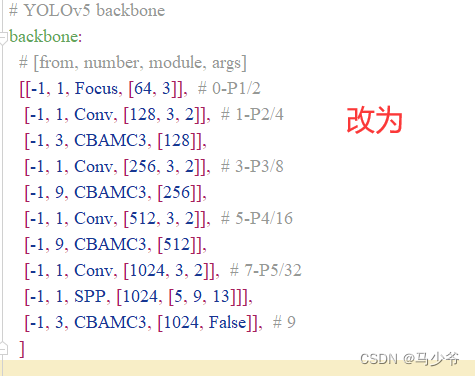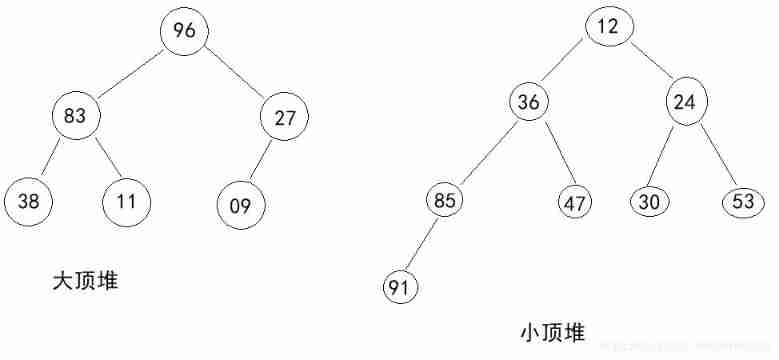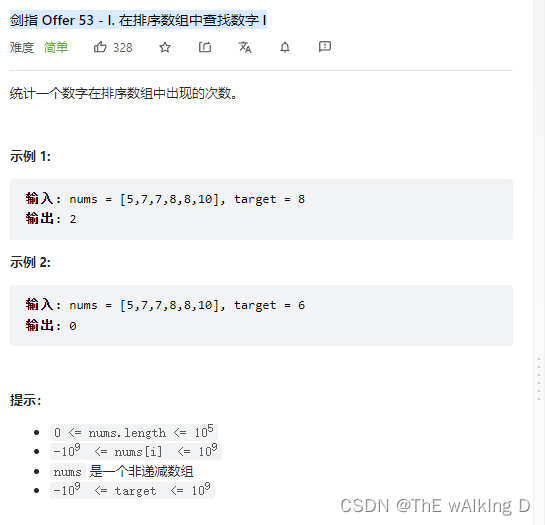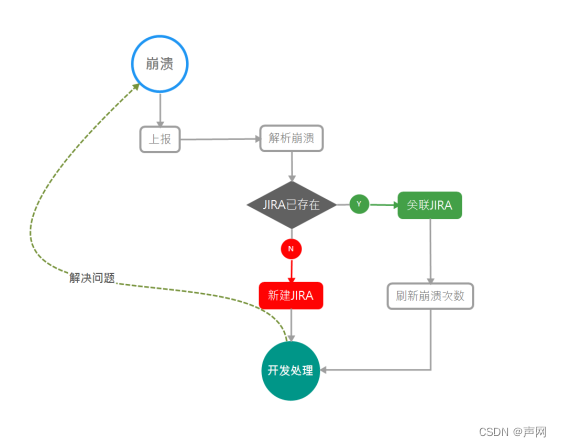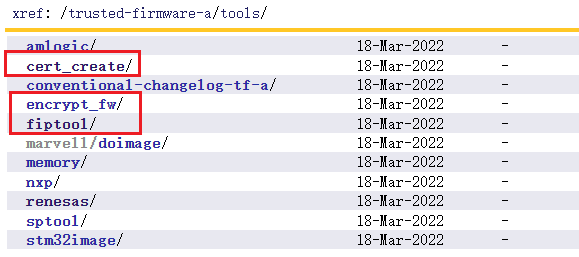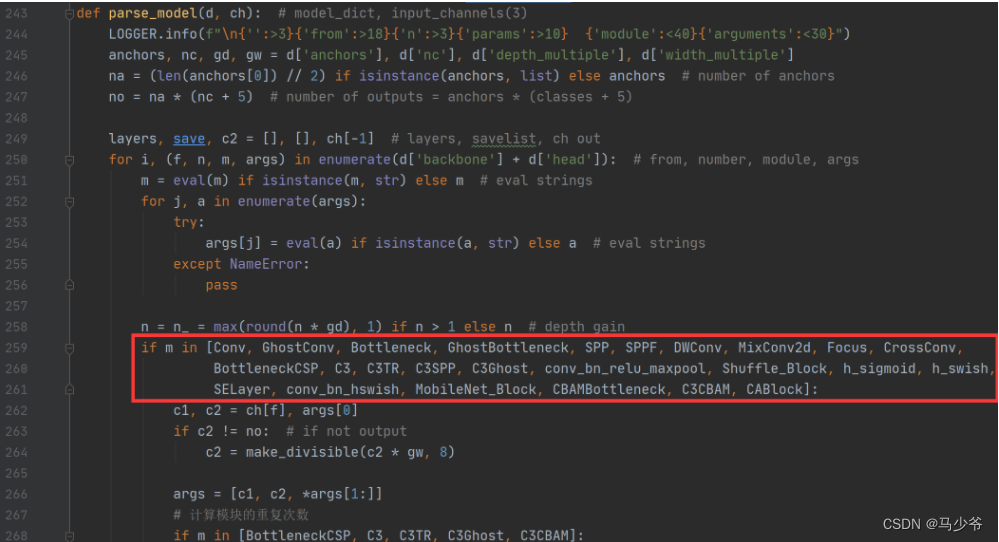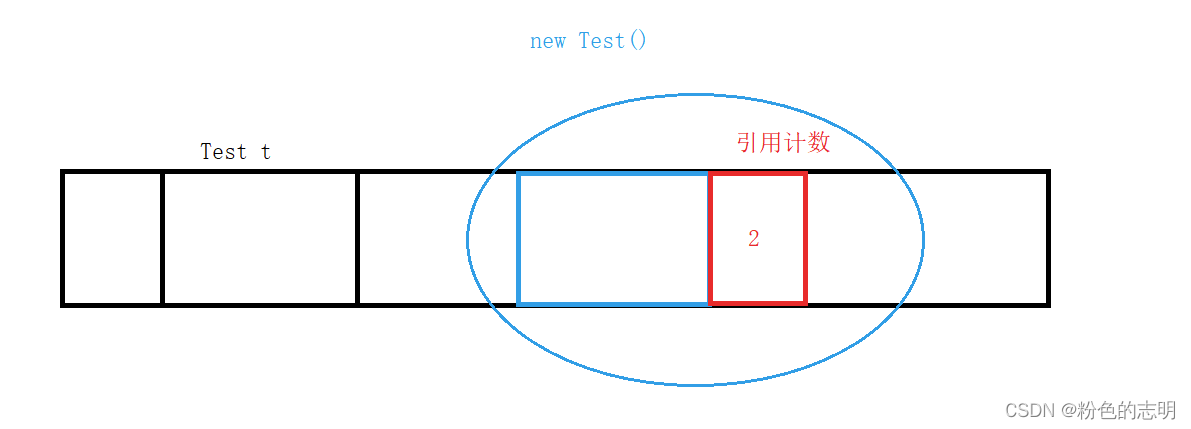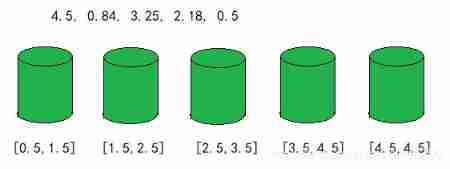当前位置:网站首页>Palindrome (csp-s-2021-palin) solution
Palindrome (csp-s-2021-palin) solution
2022-07-05 05:26:00 【Korloa】
Old rules , Present a topic :
Title Description
Given a positive integer n Sum integer sequence a1,a2,…,a2n, Here 2 n2n In number , n1,2,…,n Each appears exactly 2 Time . For now 2n operations , The goal is to create a length of 2n Sequence b1,b2,…,b2n, At the beginning b Empty sequence , You can do one of the following two operations at a time :
- The sequence of a The beginning element of is added to b At the end of , And from a Remove .
- The sequence of a The end element of is added to b At the end of , And from a Remove .
Our aim is to make b Become a Palindrome sequence , Even if it meets all 1≤i≤n, Yes bi=b2n+1−i. Please judge whether the goal can be achieved , If possible , Please output the operation scheme with the smallest dictionary order
Input format
Each test point contains multiple sets of test data .
The first line of input , Contains an integer T, Number of groups representing test data . For each group of test data :
first line , Contains a positive integer n.
The second line , contain 2n Integers separated by spaces a1,a2,…,a2n.
Output format
Output a line of answers to each group of test data .
If the palindrome sequence cannot be generated , Output one line ‐1, Otherwise, output a line with a length of 2n Of 、 By the character L or R The string formed ( No spaces ), among L Indicates the operation of removing the starting element 1,R Presentation operation 2.
You need to output the string with the smallest lexicographic order among all the schemes .
The comparison rules of dictionary order are as follows : The length is 2 n String s 1∼2n Than t 1∼2n The dictionary order is small , If and only if there is a subscript 1≤k≤2n So that for each 1≤i<k Yes si=ti And sk<tk.
I/o sample
Input #1
2 5 4 1 2 4 5 3 1 2 3 5 3 3 2 1 2 1 3
Output #1
LRRLLRRRRL -1
Answer key :
According to the meaning :
Let's be clear first : Try not to choose the right if you can choose the left , Because the question requires the output of a set of answers with the smallest dictionary order ,L Definitely prior to R;
secondly , If it can constitute b Array words , Then the last character of the output answer must be 'L', I don't need to talk about this , Because there is only one character at the end of the selection , We can take it as the left , It can also be regarded as the right . Then we must choose the left , In this way, the dictionary order is as small as possible .
Treat this problem , We still have 2 Methods :
Ashes class practice : I cite all possible situations (O(2^N)), I don't need to say that you know you must TEL Dropped , We'll just ignore this mindless method
wonderful : We can start both inside and outside :
Start first , We have two situations —— Choose the leftmost or rightmost , We prefer the leftmost , If the left side is not good, then consider the right side .
Let's take the left as an example to discuss ( The ideas on the right and left are exactly the same , No more tiring )>>>>
Given a length of 2n Sequence N, Build array S Express our answer , from ’‘L’R‘ form ; The leftmost part of the sequence waileft, The rightmost side of the array is marked wairight
In the initial state , Outer layer waileft Subscript to be 1,wairight Subscript to be 2n
We set the leftmost number as X, Take out X; Then find out the relation with X Equal value , Note that their subscripts are i1,i2, remember i2 The number on the left is neileft,i2 The number on the right is recorded as neiright
Take out X after , Outer layer left The subscript becomes i1+1, On the right right Unchanged or 2n
Next, we will start work on both sides at the same time , How to start ?
After the above operation , We have found a connection with X Subscript of equal value . Because what we finally get is the palindrome sequence , Then this palindrome sequence is read from left to right or from right to left , The order is the same , It's easy to know , Both ends of the final palindrome sequence are X, Then the palindrome sequence is approaching X A set of equal values of must be on the leftmost side of the outer layer in the original sequence waileft Or the rightmost wairight, A subscript is i2 To the left or right of (neileft or neiright).
Well , There are four situations :
1. N[waileft]=N[neileft]
2. N[waileft]=N[neiright]
3. N[wairight]=N[neileft]
4 N[wairight]=N[neiright]
Be careful : The order of these four cases is not random , It must be rigorous . Why do you say that ?
Because the above four situations are 4 Kind of operation :
Meet the corresponding situation , We will carry out the corresponding operation
1. L L
2. L R
3. R L
4. R R
We are still We should follow the principle of minimum dictionary order
What if the four situations are not satisfied ? That means this situation is not tenable . We have to choose the rightmost again , If not , That means this sequence cannot form palindromes , Decisive output -1, End procedure . This is a misunderstanding of judgment , The key point of reducing redundant operations !
In this way, we can make a judgment at the same time S A value at both ends of the array , Keep filling in the blanks .
How to fill in ?
First choose the left side S[1]=L ,S[2n]=L
If you choose the right S[1]=R ,S[2n]=L
Whether it's the outer layer or the inner layer , Just choose the left (waileft or neileft), We all remember it as L;
Just choose the right (wairight or neiright), We all remember it as R
Fill in from both sides , In this way, if it can fill , It must be the right answer .
The complete code is as follows
Code(100 ptx)
#include<cstdio>
int num[1000005];
char s[1000005];
int tot,t;
int main(){
scanf("%d",&tot);
while(tot--){
scanf("%d",&t);
int sum=2*t,nei;
for(int i=1;i<=sum;i++)
scanf("%d",&num[i]);
for(int i=2;i<=sum;i++){
if(num[1]==num[i]){
nei=i;
break;
}
}
int wai_left=2,wai_right=sum,nei_left=nei-1,nei_right=nei+1;
int start=1,end=sum;
s[start]='L';s[end]='L';
while(1){
if(start==end-1){
s[sum+1]='\0';
printf("%s\n",s+1);
break;
}
if(num[wai_left]==num[nei_left] && wai_left<nei_left){
s[++start]='L';s[--end]='L';
wai_left++;nei_left--;
}
else if(num[wai_left]==num[nei_right] ){
s[++start]='L';s[--end]='R';
wai_left++;nei_right++;
}
else if(num[wai_right]==num[nei_left]){
s[++start]='R';s[--end]='L';
wai_right--;nei_left--;
}
else if(num[wai_right]==num[nei_right] && wai_right>nei_right){
s[++start]='R';s[--end]='R';
wai_right--;nei_right++;
}
else break;
}
if(start==end-1)continue;
for(int i=1;i<sum;i++){
if(num[sum]==num[i]){
nei=i;
break;
}
}
wai_left=1;wai_right=sum-1;nei_left=nei-1;nei_right=nei+1;
start=1,end=sum;
s[start]='R';s[end]='L';
while(1){
if(start==end-1){
s[sum+1]='\0';
printf("%s\n",s+1);
break;
}
if(num[wai_left]==num[nei_left] && wai_left<nei_left){
s[++start]='L';s[--end]='L';
wai_left++;nei_left--;
}
else if(num[wai_left]==num[nei_right]){
s[++start]='L';s[--end]='R';
wai_left++;nei_right++;
}
else if(num[wai_right]==num[nei_left]){
s[++start]='R';s[--end]='L';
wai_right--;nei_left--;
}
else if(num[wai_right]==num[nei_right] && wai_right>nei_right){
s[++start]='R';s[--end]='R';
wai_right--;nei_right++;
}
else{
putchar('-');putchar('1');putchar('\n');
break;
}
}
}
return 0;
} The program evaluation results are as follows :

But the code when I first submitted is as follows :
Code(first)
#include<iostream>
#include<cstdio>
using namespace std;
const int maxn=500005;
int n;
int a[maxn*2];
char res[maxn*2];
bool work(int l1,int r1,int l2,int r2)
{
for(int i=1;i<n;i++)
{
if((l1<=r1)&&(((l2<=r2)&&(a[l1]==a[l2]))||((l1<r1)&&(a[l1]==a[r1]))))
{
if((l1<r1)&&(a[l1]==a[r1]))
{
l1++;
r1--;
res[i]='L';
res[2*(n-1)-i+1]='L';
}
else
{
l1++;
l2++;
res[i]='L';
res[2*(n-1)-i+1]='R';
}
}
else if((l2<=r2)&&(((l1<=r1)&&(a[r2]==a[r1]))||((l2<r2)&&(a[l2]==a[r2]))))
{
if((l2<r2)&&(a[l2]==a[r2]))
{
l2++;
r2--;
res[i]='R';
res[2*(n-1)-i+1]='R';
}
else
{
r1--;
r2--;
res[i]='R';
res[2*(n-1)-i+1]='L';
}
}
else
{
return false;
}
}
return true;
}
int main()
{
int t;
cin>>t;
while(t--)
{
cin>>n;
for(int i=1;i<=2*n;i++)
{
scanf("%d",&a[i]);
}
int l1=0;
int l2=0;
for(int i=2;i<=2*n;i++)
{
if(a[i]==a[1])
{
l1=i;
break;
}
}
for(int i=1;i<2*n;i++)
{
if(a[i]==a[2*n])
{
l2=i;
break;
}
}
if(work(2,l1-1,l1+1,2*n))
{
printf("L%sL",res+1);
cout<<endl;
}
else if(work(1,l2-1,l2+1,2*n-1))
{
printf("R%sL",res+1);
cout<<endl;
}
else
{
cout<<"-1"<<endl;
}
}
return 0;
}The evaluation results are as follows :

I was cheated for more than half an hour . Readers can compare the differences between the two codes . Just add two more lines
s[sum+1]='\0';Otherwise, the residual term of the previous result may be output , You must have a closing symbol ! It sounds an alarm for you .....
End~~~~
If there is something you don't understand , Welcome to consult below the comments .
Writing is not easy to , Thank you for your support !
边栏推荐
- Acwing 4300. Two operations
- A problem and solution of recording QT memory leakage
- [interval problem] 435 Non overlapping interval
- 动漫评分数据分析与可视化 与 IT行业招聘数据分析与可视化
- 【ES实战】ES上的native realm安全方式使用
- Haut OJ 1352: string of choice
- [to be continued] [depth first search] 547 Number of provinces
- Solon 框架如何方便获取每个请求的响应时间?
- Page countdown
- Improvement of pointnet++
猜你喜欢
随机推荐
剑指 Offer 53 - II. 0~n-1中缺失的数字
读者写者模型
Embedded database development programming (V) -- DQL
[turn]: Apache Felix framework configuration properties
YOLOv5-Shufflenetv2
Solon Auth 认证框架使用演示(更简单的认证框架)
[转]:Apache Felix Framework配置属性
[sum of two numbers] 169 sum of two numbers II - enter an ordered array
Zheng Qing 21 ACM is fun. (3) part of the problem solution and summary
kubeadm系列-02-kubelet的配置和启动
Introduction to memory layout of FVP and Juno platforms
SAP method of modifying system table data
支持多模多态 GBase 8c数据库持续创新重磅升级
Haut OJ 1350: choice sends candy
The next key of win generates the timestamp file of the current day
Binary search basis
Using HashMap to realize simple cache
Acwing 4300. Two operations
A preliminary study of sdei - see the essence through transactions
SDEI初探-透过事务看本质
